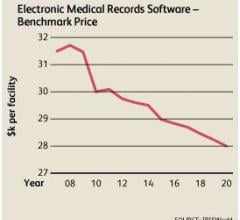
July 22, 2009 – Before implementing an electronic health record (EHR) system, providers must first gain control of the number of records, forms and files flowing through the organization, and a recent Xerox Corp. study explained issues involved.
Survey found that too many paper-based files are the main cause of inefficiencies for healthcare professionals. The respondents said the document-related challenges that contribute to workplace inefficiency include: ?
• 43 percent say there are too many paper-based files ?
• 30 percent complain of information residing in multiple formats, making it nearly to impossible to search?
• 29 percent deal with unorganized electronic
• 28 percent blame an inefficient document routing and approval process
• 58 percent of healthcare professionals say searching for information at work is worse than being stuck in traffic. ??
• 75 percent of healthcare workers report that electronic documents are part of their records management strategy, but 77 percent of healthcare professionals admitted they continue to be frustrated when searching for information needed to do their job effectively. ??
• 85 percent of healthcare professionals believe their frustrations can be addressed with proper solutions.
Xerox offers three major steps an organization can take to better prepare for the upcoming EHR deadline are:
?• Take inventory of document processes to assess the number of records, forms and files flowing through the organization and the costs associated with printing, sharing, storing, securing and updating them. This will put healthcare organizations in far better shape to meet security and compliance requirements and take steps toward EHR when the technology infrastructure is ready. ??
• Outsource document management. By working with the right external experts increases a healthcare organization’s ability to respond to fast-changing requirements related to EHR. An outsourcing partner with healthcare expertise will develop a plan that achieves the right formula for existing employee work habits, daily volume, and organizational readiness for implementing new technology. ??
• Implement change management. Consider the learning curve associated with training patients, providers, government agencies, and payers on how to apply EHR technology for the betterment of patient care. Develop a structured, deliberate approach to transitioning skills, behaviors and mindset to understand, support and participate in the switch to digital.
For more information: www.pitchengine.com/xeroxcorporation/xerox-survey-finds-information-overload-a-hinder-to-electronic-health-records-/15485/



 June 14, 2024
June 14, 2024 








